One of the keys to the accurate and efficient creation of small plastic parts is having a mold that is perfectly designed for the task at hand. There was a time when toolmakers were generalists who could create a mold to meet any specs. Today, however, with advances in everything from the design of parts to the materials used to make them, that’s no longer the case.
Small Plastic Part Injection Molding: Does In-House Toolmaking Limit Your Options?
Posted: July 10, 2017 by
Jon Gelston
Tags:
Plastic Injection Molding
The Surprisingly High Cost of Cheap Tooling for Small Plastic Parts
Posted: June 16, 2017 by
Jon Gelston
Tags:
Plastic Injection Molding Tooling
There are two truths that are clear in virtually every industry today: capital can be hard to come by and companies are under intense pressure to control costs in order to maximize profits. Organizations that use plastic injection molding to produce parts for their products may be tempted by the lure of cheap tooling. However, as a leading molder of small plastic parts in the Denver area, we know that the reality is that sometimes lower-cost alternatives can end up costing more in the long run.
Tooling Transfers: When and How You Should Move to a New Small Plastic Part Injection Molder
Posted: June 5, 2017 by
Jon Gelston
Tags:
Plastic Injection Molding
It takes some time and effort to establish a good working relationship with a small plastic part injection molder. As a result, you may be reluctant to move on to a different provider, even if the current relationship starts to deteriorate.
A number of questions will likely come to mind — things like:
- What are the signs that it’s time to leave?
- What are we risking if we decide to stay?
- If we choose to leave, what is involved in moving our processes to a new injection molding shop?
Tips for Optimizing Your Plastic Parts Manufacturing Process for Assemblies
Posted: May 19, 2017 by
Jon Gelston
Tags:
Assemblies
One of the more interesting challenges we get at our small part plastic injection molding operation in the Denver area is how to design a plastic parts manufacturing process in a way that produces the best assemblies. When two or more finished parts must fit together properly to make one assembly, there are a number of factors to keep in mind.
Steel vs. Aluminum Molds: What’s Right for Your Small Plastic Parts Project?
Posted: April 25, 2017 by
Jon Gelston
Tags:
Plastic Injection Molding Tooling
Historically, small plastic part injection molding has been performed primarily with steel molds. There are many advantages to steel, including:
What You Need to Know About Nylon
Posted: March 14, 2017 by
Jon Gelston
Tags:
Plastic Types
Nylon is a synthetic thermoplastic first produced in 1935 and introduced as a fabric during the 1939 New York World's Fair. You will also see Nylon referred to by its chemical designation “PA.” It is commonly available in black, white, and off-white or beige, which is its natural color. Nylon can be produced as fibers, filaments, sheet stock, and films, and also as the raw material for injection molding.
For High Impact, Low Friction Applications, Acetal is Your Plastic
Posted: February 24, 2017 by
Jon Gelston
Tags:
Plastic Types
Acetal is the common name for polyoxymethylene (POM), a white semi-crystalline thermoplastic. It is strong, abrasion and impact resistant, and tolerates many organic chemical compounds. It has a low coefficient of friction and durable stiffness, so it is often used in moving parts. Because it is widely available in sheet and block form, many machined prototypes are made of acetal. Examples of items made from acetal include a variety of large and small plastic parts:
Polycarbonate: A Strong, Clear, Multi-Purpose Plastic
Posted: February 15, 2017 by
Jon Gelston
Tags:
Plastic Types
Polycarbonates (PC) are a group of strong, impact-resistant, heat-resistant, thermoplastics. They are naturally transparent, with the raw material capable of transmitting light as well as glass—and they are much lighter than glass. While they are clear by default, PC plastics are commercially available in many colors.
An Introduction to ABS Plastic for Injection Molding
Posted: January 27, 2017 by
Jon Gelston
Tags:
Plastic Types
ABS is an acronym for acrylonitrile butadiene styrene. (Now you understand why it goes by its initials!) It is an opaque thermoplastic polymer. The term “thermoplastic” refers to a class of plastics that can be reprocessed after an initial heat cycle; as opposed to "thermoset" plastics that undergo an irreversible chemical change during its first heat cycle. ABS is a common engineering grade plastic and it is used in many products around you, particularly electronic enclosures.
Rules for Using Ribs to Strengthen Plastic Injection Molded Parts
Posted: January 18, 2017 by
Jon Gelston
Tags:
Plastic Injection Molding
It’s not uncommon for a small plastic injection molded part to be expected to hold up under a large load. One of the ways to strengthen a part is by adding one or more “ribs” to the design. Ribs are thin protrusions that extend perpendicular from a wall or plane to provide added stiffness and strength.

 SINCE 1993 MADE IN USA
SINCE 1993 MADE IN USA 











